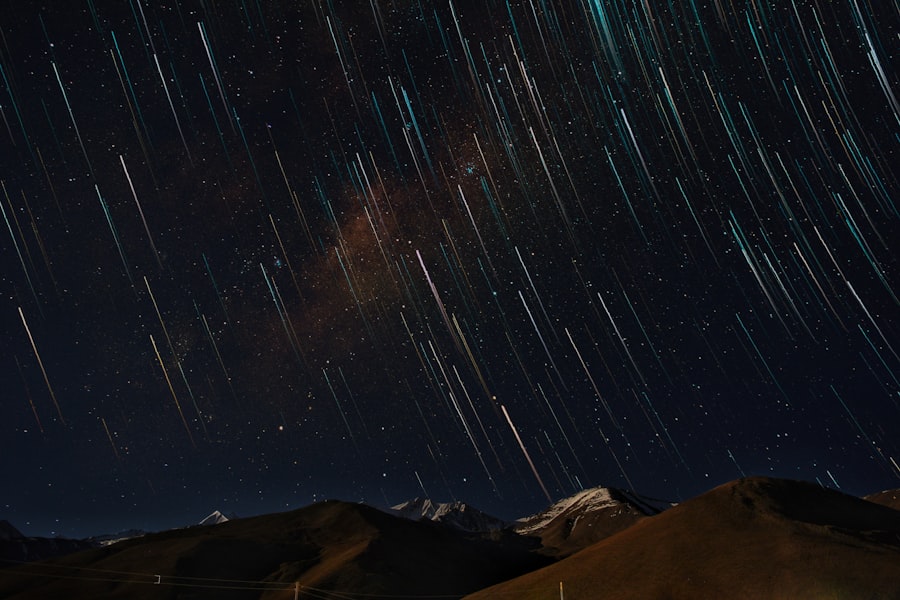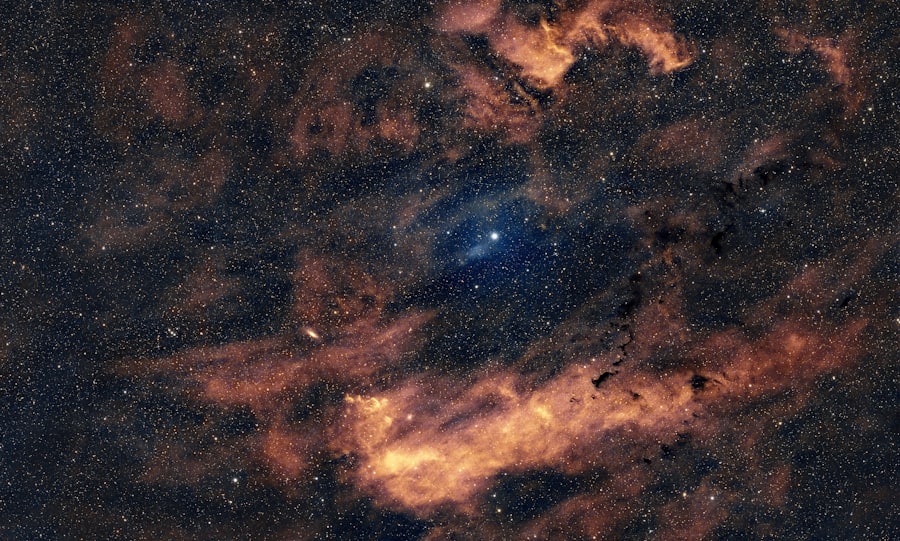Launched in 1990, the Hubble Space Telescope has revolutionized our understanding of the cosmos, providing breathtaking images and invaluable data that have reshaped the field of astronomy. Positioned in low Earth orbit, Hubble operates above the distorting effects of Earth’s atmosphere, allowing it to capture images with unprecedented clarity and detail. This remarkable instrument has not only expanded our knowledge of celestial phenomena but has also inspired a sense of wonder about the universe we inhabit.
With its 2.4-meter primary mirror and a suite of advanced instruments, Hubble has been instrumental in observing distant galaxies, nebulae, and other astronomical objects. Hubble’s contributions extend beyond mere aesthetics; it has played a crucial role in key discoveries that have shaped modern astrophysics. For instance, its observations have provided evidence for the existence of dark energy, a mysterious force driving the accelerated expansion of the universe.
Additionally, Hubble has helped determine the rate of expansion of the universe, known as the Hubble constant, which has profound implications for our understanding of cosmology. The telescope’s ability to capture stunning images serves as a gateway to deeper scientific inquiry, inviting both scientists and the public to engage with the mysteries of the universe.
Key Takeaways
- The Hubble Space Telescope has captured stunning images of the universe, showcasing its beauty and wonder.
- Jaw-dropping images of planets and moons have been captured, revealing their unique features and landscapes.
- Nebulae and galaxies have been shown to be wondrous and awe-inspiring, with their intricate patterns and colors.
- The mysteries of black holes have been explored, revealing their fascinating and enigmatic nature.
- Star clusters have been depicted in spectacular beauty, showcasing the diversity and magnificence of the universe.
- The magnificent aurora displays on other planets have been captured, displaying their mesmerizing and colorful nature.
- The astonishing power of supernovae has been documented, revealing the explosive and transformative nature of these cosmic events.
- Mesmerizing views of Earth from space have been captured, showcasing the planet’s beauty and fragility.
Jaw-Dropping Images of Planets and Moons
The Hubble Space Telescope has delivered an array of stunning images of planets and their moons within our solar system, showcasing their unique features and characteristics. One of the most iconic images captured by Hubble is that of Jupiter, the largest planet in our solar system. The telescope’s observations have revealed intricate details of Jupiter’s atmosphere, including its famous Great Red Spot—a massive storm larger than Earth that has been raging for centuries.
Hubble’s ability to capture high-resolution images has allowed scientists to study the dynamics of this storm and monitor changes over time, providing insights into atmospheric phenomena that were previously difficult to observe. In addition to Jupiter, Hubble has provided breathtaking views of Saturn and its magnificent ring system. The telescope’s observations have unveiled the complex structure of Saturn’s rings, revealing gaps and divisions that hint at the gravitational influence of its moons.
Hubble has also captured stunning images of Saturn’s moon Titan, which is shrouded in a thick atmosphere and features lakes of liquid methane on its surface. These images not only highlight the beauty of these celestial bodies but also serve as a foundation for ongoing research into their geology and potential for hosting life.
The Wonders of Nebulae and Galaxies

Nebulae are among the most visually striking objects in the universe, and Hubble has captured some of the most breathtaking images of these cosmic clouds. One such example is the Pillars of Creation, located within the Eagle Nebula. This iconic image showcases towering columns of gas and dust where new stars are being born.
The intricate structures within the nebula are illuminated by the light from nearby young stars, creating a stunning contrast between the dark regions and the glowing gas. Such images not only captivate the imagination but also provide valuable insights into stellar formation processes. Hubble’s observations extend beyond nebulae to entire galaxies, revealing their diverse shapes and structures.
The telescope has captured stunning images of spiral galaxies like the Whirlpool Galaxy (M51) and elliptical galaxies such as M87. These images allow astronomers to study galaxy formation and evolution, shedding light on how galaxies interact with one another through gravitational forces. The detailed views provided by Hubble have led to significant discoveries, including the identification of supermassive black holes at the centers of many galaxies, fundamentally altering our understanding of galactic dynamics.
Exploring the Mysteries of Black Holes
| Aspect | Details |
|---|---|
| Black Hole Types | Stellar, Intermediate, Supermassive |
| Formation | From collapsing massive stars or merging of smaller black holes |
| Event Horizon | Boundary beyond which nothing can escape the black hole’s gravitational pull |
| Size | Ranges from a few kilometers to millions of kilometers in diameter |
| Effects on Time | Time dilation near the event horizon |
Black holes remain one of the most enigmatic phenomena in astrophysics, and Hubble has played a pivotal role in advancing our understanding of these cosmic giants. By observing the motion of stars around invisible objects, Hubble has provided compelling evidence for the existence of supermassive black holes at the centers of galaxies. For instance, Hubble’s observations of the Andromeda Galaxy revealed a supermassive black hole with a mass equivalent to millions of suns, offering insights into how these massive entities influence their host galaxies.
Moreover, Hubble has contributed to our understanding of stellar black holes formed from collapsing massive stars. By studying X-ray emissions from binary systems where one star is a black hole, astronomers have been able to infer properties such as mass and spin. These observations have led to a deeper comprehension of how black holes form and evolve over time.
The telescope’s ability to capture high-resolution images allows scientists to probe regions near black holes, providing a glimpse into their extreme environments and the effects they have on surrounding matter.
The Spectacular Beauty of Star Clusters
Star clusters are fascinating celestial formations that offer insights into stellar evolution and galactic dynamics. Hubble has provided stunning images of both open clusters and globular clusters, each showcasing unique characteristics. Open clusters, such as the Pleiades, consist of young stars that formed together from the same molecular cloud.
Hubble’s observations have revealed intricate details about these clusters’ stellar populations and their interactions with surrounding gas and dust. In contrast, globular clusters are densely packed collections of older stars that orbit galaxies in spherical halos. Hubble’s high-resolution imaging capabilities have allowed astronomers to study these ancient clusters in detail, uncovering information about their stellar populations and chemical compositions.
For example, Hubble’s observations of the globular cluster 47 Tucanae have provided insights into stellar evolution processes and the formation history of these intriguing structures. The beauty captured in these images not only highlights the diversity of star clusters but also serves as a reminder of the complex processes that govern star formation and evolution.
The Magnificent Aurora Displays on Other Planets

Auroras are mesmerizing natural light displays caused by charged particles interacting with a planet’s magnetic field and atmosphere. While Earth is known for its stunning auroras near the polar regions, other planets in our solar system also exhibit these spectacular phenomena. Hubble has captured breathtaking images of auroras on planets such as Jupiter and Saturn, revealing their grandeur and complexity.
On Jupiter, auroras are particularly intense due to its strong magnetic field and rapid rotation. Hubble’s observations have shown that Jupiter’s auroras can be thousands of times more powerful than those on Earth, creating brilliant displays that can be seen in ultraviolet light. These observations have provided valuable insights into Jupiter’s magnetosphere and its interactions with solar wind.
Similarly, Hubble has captured stunning images of Saturn’s auroras, which are influenced by its unique magnetic field configuration and atmospheric conditions. These captivating displays not only showcase the beauty of our solar system but also enhance our understanding of planetary atmospheres and magnetospheres.
The Astonishing Power of Supernovae
Supernovae represent one of the most dramatic events in the universe—the explosive death throes of massive stars. Hubble has played a crucial role in observing these cataclysmic events, providing detailed images that reveal their complex structures and aftermaths. One notable example is Supernova 1987A, which occurred in a nearby galaxy called the Large Magellanic Cloud.
Hubble’s observations over several decades have allowed astronomers to study the evolution of this supernova remnant, providing insights into nucleosynthesis—the process by which elements are formed during stellar explosions. The telescope has also captured images of other supernovae across various galaxies, revealing their diverse morphologies and light curves. These observations have led to significant discoveries regarding the mechanisms behind supernova explosions and their role in enriching the interstellar medium with heavy elements.
The remnants left behind by supernovae often give rise to new stars and planetary systems, illustrating how these explosive events contribute to the ongoing cycle of stellar birth and death in the universe.
The Mesmerizing Views of Earth from Space
While much of Hubble’s focus is on distant celestial objects, it has also provided stunning views of Earth from space. The telescope’s unique vantage point allows it to capture detailed images of our planet’s atmosphere, landforms, and oceans. These images serve not only as a reminder of Earth’s beauty but also as valuable tools for studying environmental changes and natural disasters.
Hubble’s observations have documented phenomena such as hurricanes, wildfires, and volcanic eruptions from a perspective that is rarely seen by human eyes. For instance, during Hurricane Isabel in 2003, Hubble captured striking images that illustrated both the storm’s structure and its impact on surrounding areas. Such observations contribute to our understanding of weather patterns and climate change while fostering a sense of connection between humanity and our home planet.
In addition to natural phenomena, Hubble has also documented human-made changes to Earth’s landscape, such as urbanization and deforestation. These images serve as powerful reminders of our impact on the environment and underscore the importance of stewardship for future generations. Through its lens, Hubble not only captures the beauty of Earth but also highlights our responsibility to protect this fragile planet amidst an ever-changing universe.


